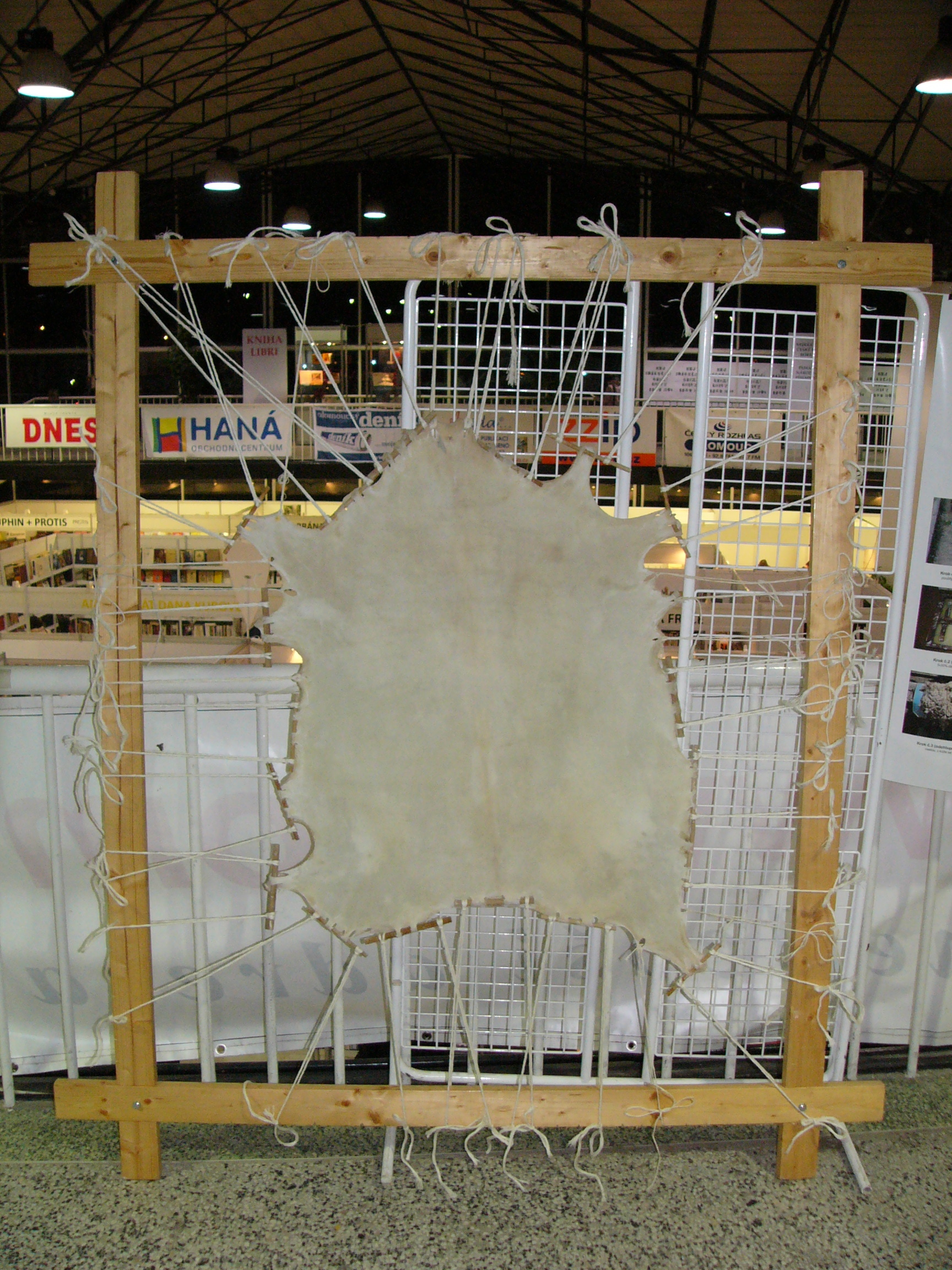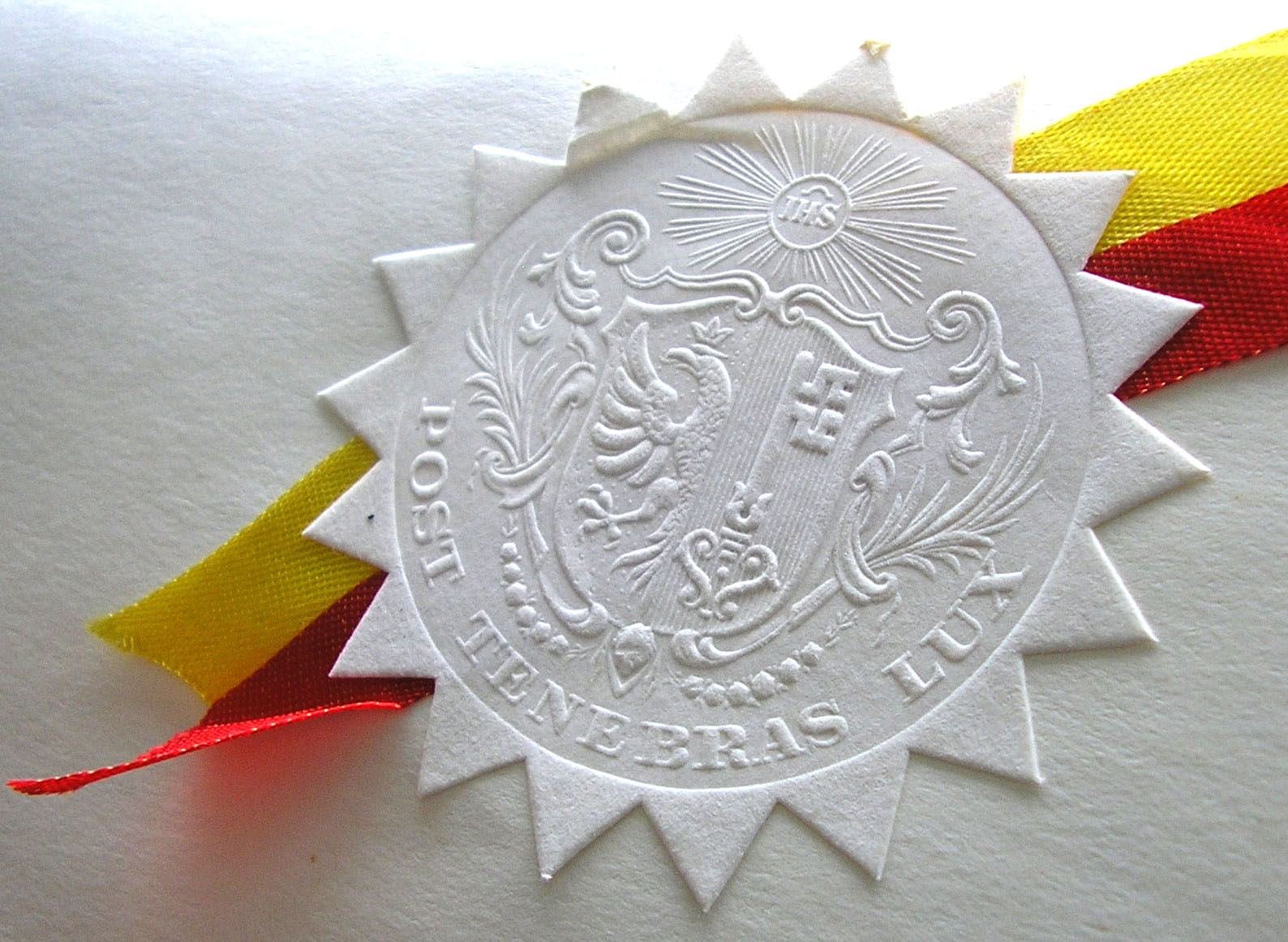|
Parchment Craft
Parchment craft, also known as ''Pergamano'', is the art of embellishing and decorating parchment paper (or vellum paper) through the use of techniques such as embossing, perforating, stippling, cutting and coloring. Parchment craft has been predominantly used in the making of cards ( religious devotional cards, greeting cards and gift cards) but the techniques are being applied to related items such as bookmarks and picture frames as well as 3-dimensional sculptural paper projects such as ornaments and boxes. History Historians believe that parchment craft originated as an art form in Europe during the 15th or 16th century. Parchment craft at that time occurred principally in Catholic communities, where crafts persons created lace-like items such as devotional pictures and communion cards. The craft developed over time, with new techniques and refinements being added. Until the 16th century, parchment craft was a European art form. However, missionaries and other settlers reloca ... [...More Info...] [...Related Items...] OR: [Wikipedia] [Google] [Baidu] |
Parchment
Parchment is a writing material made from specially prepared untanned skins of animals—primarily sheep, calves, and goats. It has been used as a writing medium for over two millennia. Vellum is a finer quality parchment made from the skins of young animals such as lambs and young calves. It may be called animal membrane by libraries and museums that wish to avoid distinguishing between ''parchment'' and the more-restricted term ''vellum'' (see below). Parchment and vellum Today the term ''parchment'' is often used in non-technical contexts to refer to any animal skin, particularly goat, sheep or cow, that has been scraped or dried under tension. The term originally referred only to the skin of sheep and, occasionally, goats. The equivalent material made from calfskin, which was of finer quality, was known as ''vellum'' (from the Old French or , and ultimately from the Latin , meaning a calf); while the finest of all was ''uterine vellum'', taken from a calf foetus or s ... [...More Info...] [...Related Items...] OR: [Wikipedia] [Google] [Baidu] |
Vellum
Vellum is prepared animal skin or membrane, typically used as writing material. Parchment is another term for this material, from which vellum is sometimes distinguished, when it is made from calfskin, as opposed to that made from other animals, or otherwise being of higher quality. Vellum is prepared for writing or printing on, to produce single pages, scrolls, codices, or books. Modern scholars and custodians increasingly use only the less specific, potentially-confusing term "membrane".Stokes and Almagno 2001, 114Clemens and Graham 2007, pp. 9–10. Depending on factors such as the method of preparation it may be very hard to determine the animal species involved (let alone its age) without using a laboratory, and the term avoids the need to distinguish between vellum and parchment. Vellum is generally smooth and durable, although there are great variations depending on preparation and the quality of the skin. The manufacture involves the cleaning, bleaching, stretchin ... [...More Info...] [...Related Items...] OR: [Wikipedia] [Google] [Baidu] |
Embossing (paper)
Embossing and debossing are the processes of creating either raised or recessed relief images and designs in paper and other materials. An embossed pattern is raised against the background, while a debossed pattern is sunken into the surface of the material but might protrude somewhat on the reverse side. Techniques Often used in combination with foil stamping, embossing alters the surface of paper stock or other substrates by providing a three-dimensional or raised effect on selected areas. The procedure requires the use of two dies: one that is raised and one that is recessed. The dies fit into each other so that when the paper is pressed between them, the raised die forces the stock into the recessed die and creates the embossed impression. A specific level of pressure is applied to the dies in order to squeeze the fibers of the paper, which results in a permanently raised area in the paper. When the dies are produced, a die maker engraves the desired image into several me ... [...More Info...] [...Related Items...] OR: [Wikipedia] [Google] [Baidu] |
Stippling
Stippling is the creation of a pattern simulating varying degrees of solidity or shading by using small dots. Such a pattern may occur in nature and these effects are frequently emulated by artists. Art In printmaking, stipple engraving is a technique using flicks of the burin to build up the image in short lines or dots, often combined with conventional linear engraving. In engraved glass a similar stipple technique has often been popular. In a drawing or painting, the dots are made of pigment of a single colour, applied with a pen or brush; the denser the dots, the darker the apparent shade—or lighter, if the pigment is lighter than the surface. This is similar to—but distinct from— pointillism, which uses dots of different colours to simulate blended colours. Botany In description of flora species, a stippling is a kind of pattern, especially in the case of flowering plants, produced in nature that occur on flower petals and sepals. These are similar to the dot ... [...More Info...] [...Related Items...] OR: [Wikipedia] [Google] [Baidu] |
Holy Card
In the Christian tradition, holy cards or prayer cards are small, devotional pictures for the use of the faithful that usually depict a religious scene or a saint in an image about the size of a playing card. The reverse typically contains a prayer, some of which promise an indulgence for its recitation. The circulation of these cards is an important part of the visual folk culture of Roman Catholics, and in modern times, prayer cards have also become popular among Orthodox Christians and Protestant Christians, although with the latter, biblical themes are emphasized within them. Uses Most cards are circulated to assist the veneration of the saints and images they bear. Special holy cards are printed for Catholics to be distributed at funerals by the family of the deceased that include the name and usually dates of birth and death of the deceased. These are a particular type of the in memoriam cards, which can also record other events such as baptisms, confirmations, ordina ... [...More Info...] [...Related Items...] OR: [Wikipedia] [Google] [Baidu] |
Nib (pen)
A nib is the part of a quill, dip pen, fountain pen, ball point or stylus which comes into contact with the writing surface in order to deposit ink. Different types of nibs vary in their purpose, shape and size, as well as the material from which they are made. History Quill The quill replaced the reed pen across Europe by the Early Middle Ages and remained the main writing tool of the West for nearly a thousand years until the 17th century. Quills are fashioned by cutting a nib into the end of a feather obtained from a fairly large bird, such as a goose, traditionally from its left wing. A quill has the advantage of being more durable and more flexible than a reed pen, and it can also retain ink in the hollow shaft of the feather, known as the calamus, allowing more writing time between ink dippings. The quill was in common use until the early 19th century and the advent of the metal nib. For business purposes, the quill was fairly quickly overtaken; however, it remains popul ... [...More Info...] [...Related Items...] OR: [Wikipedia] [Google] [Baidu] |
Acrylic Paint
Acrylic paint is a fast-drying paint made of pigment suspended in acrylic polymer emulsion and plasticizers, silicone oils, defoamers, stabilizers, or metal soaps. Most acrylic paints are water-based, but become water-resistant when dry. Depending on how much the paint is diluted with water, or modified with acrylic gels, mediums, or pastes, the finished acrylic painting can resemble a watercolor, a gouache, or an oil painting, or have its own unique characteristics not attainable with other media. Water-based acrylic paints are used as latex house paints, as latex is the technical term for a suspension of polymer microparticles in water. Interior latex house paints tend to be a combination of binder (sometimes acrylic, vinyl, pva, and others), filler, pigment, and water. Exterior latex house paints may also be a co-polymer blend, but the best exterior water-based paints are 100% acrylic, because of its elasticity and other factors. Vinyl, however, costs half of what 1 ... [...More Info...] [...Related Items...] OR: [Wikipedia] [Google] [Baidu] |
Oil Pastel
An oil pastel is a painting and drawing medium formed into a stick which consists of pigment mixed with a binder mixture of non-drying oil and wax. They differ from other pastel sticks which are made with a gum or methyl cellulose binder, and from wax crayons which are made without oil. The surface of an oil pastel painting is less powdery than one made from gum pastels, but more difficult to protect with a fixative. Oil pastels are bold and bright. They can be blended easily but they can break easily too. History At the end of World War I, Kanae Yamamoto proposed an overhaul of the Japanese education system. He thought that it had been geared too much towards uncritical absorption of information by imitation and wanted to promote a less restraining system, a vision he expounded in his book ''Theory of self-expression'' which described the ''Jiyu-ga'' method, "learning without a teacher". Teachers Rinzo Satake and his brother-in-law Shuku Sasaki read Yamamoto's work and be ... [...More Info...] [...Related Items...] OR: [Wikipedia] [Google] [Baidu] |
Crafts
A craft or trade is a pastime or an occupation that requires particular skills and knowledge of skilled work. In a historical sense, particularly the Middle Ages and earlier, the term is usually applied to people occupied in small scale production of goods, or their maintenance, for example by tinkers. The traditional term ''craftsman'' is nowadays often replaced by ''artisan'' and by ''craftsperson'' (craftspeople). Historically, the more specialized crafts with high-value products tended to concentrate in urban centers and formed guilds. The skill required by their professions and the need to be permanently involved in the exchange of goods often demanded a generally higher level of education, and craftsmen were usually in a more privileged position than the peasantry in societal hierarchy. The households of craftsmen were not as self-sufficient as those of people engaged in agricultural work, and therefore had to rely on the exchange of goods. Some crafts, especially in ... [...More Info...] [...Related Items...] OR: [Wikipedia] [Google] [Baidu] |

.jpg)

.jpg)

